 W
WLogistics is generally the detailed organization and implementation of a complex operation. In a general business sense, logistics is the management of the flow of things between the point of origin and the point of consumption to meet the requirements of customers or corporations. The resources managed in logistics may include tangible goods such as materials, equipment, and supplies, as well as food and other consumable items.
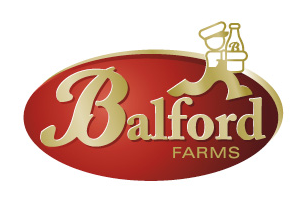 W
WBalford Farms is an American dairy company located in Burlington, New Jersey. It is the oldest privately-owned and operated independent distributor in the Lehigh Valley region.
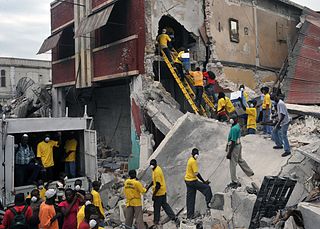 W
WA bucket brigade or human chain is a method for transporting items where items are passed from one person to the next.
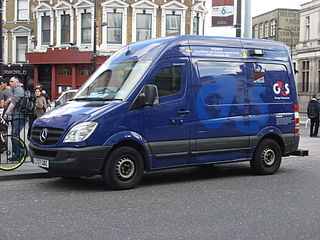 W
WCash-in-transit (CIT) or cash/valuables-in-transit (CVIT) is the physical transfer of banknotes, coins, credit cards and items of value from one location to another. The locations include cash centers and bank branches, ATM points, large retailers and other premises holding large amounts of cash such as ticket vending machines and parking meters.
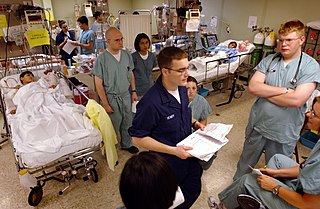 W
WClinical engineering is a speciality within biomedical engineering responsible primarily for applying and implementing medical technology to optimize healthcare delivery. Roles of clinical engineers include training and supervising biomedical equipment technicians (BMETs), working with governmental regulators on hospital inspections/audits, and serving as technological consultants for other hospital staff. Clinical engineers also advise medical device producers regarding prospective design improvements based on clinical experiences, as well as monitor the progression of the state-of-the-art in order to redirect hospital procurement patterns accordingly.
 W
WA cold chain is a temperature-controlled supply chain. An unbroken cold chain is an uninterrupted series of refrigerated production, storage and distribution activities, along with associated equipment and logistics, which maintain quality via a desired low-temperature range. It is used to preserve and to extend and ensure the shelf life of products, such as fresh agricultural produce, seafood, frozen food, photographic film, chemicals, and pharmaceutical products. Such products, during transport and when in transient storage, are sometimes called cool cargo. Unlike other goods or merchandise, cold chain goods are perishable and always en route towards end use or destination, even when held temporarily in cold stores and hence commonly referred to as "cargo" during its entire logistics cycle.
 W
WComputer-aided dispatch (CAD), also called computer-assisted dispatch, is a method of dispatching taxicabs, couriers, field service technicians, mass transit vehicles or emergency services assisted by computer. It can either be used to send messages to the dispatchee via a mobile data terminal (MDT) and/or used to store and retrieve data. A dispatcher may announce the call details to field units over a two-way radio. Some systems communicate using a two-way radio system's selective calling features. CAD systems may send text messages with call-for-service details to alphanumeric pagers or wireless telephony text services like SMS. The central idea is that persons in a dispatch center are able to easily view and understand the status of all units being dispatched. CAD provides displays and tools so that the dispatcher has an opportunity to handle calls-for-service as efficiently as possible.
 W
WPackage testing or packaging testing involves the measurement of a characteristic or property involved with packaging. This includes packaging materials, packaging components, primary packages, shipping containers, and unit loads, as well as the associated processes.
 W
WGround Parachute Extraction System (GPES) refers to a method by which ground forces are resupplied by low altitude air drops. It has also been referred to as Ground Proximity Extraction System. The system, developed jointly by the United States Air Force and Army, is similar to the arrester technique used on aircraft carriers. The cargo aircraft flies low over the delivery area. A hook is attached to the pallet load. Another hook at the other end of the cable line is attached to the rear cargo door. When the plane nears the delivery site, the hook at the cargo door snags an arrester wire that is placed perpendicular to the plane's flight path thereby yanking the pallet load out of the aircraft to the intended delivery site.
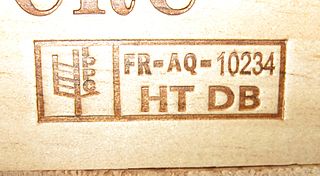 W
WInternational Standards For Phytosanitary Measures No. 15 is an International Phytosanitary Measure developed by the International Plant Protection Convention (IPPC) that directly addresses the need to treat wood materials of a thickness greater than 6mm, used to ship products between countries. Its main purpose is to prevent the international transport and spread of disease and insects that could negatively affect plants or ecosystems. ISPM 15 affects all wood packaging material requiring that they be debarked and then heat treated or fumigated with methyl bromide and stamped or branded, with a mark of compliance. This mark of compliance is colloquially known as the "wheat stamp". Products exempt from the ISPM 15 are made from an alternative material, like paper, plastic or wood panel products.
 W
WThe low-altitude parachute-extraction system (LAPES) is a tactical military airlift delivery method where a fixed-wing cargo aircraft can deposit supplies in situations in which landing is not an option, in an area that is too small to accurately parachute supplies from a high altitude.
 W
WMedical logistics is the logistics of pharmaceuticals, medical and surgical supplies, medical devices and equipment, and other products needed to support doctors, nurses, and other health and dental care providers. Because its final customers are responsible for the lives and health of their patients, medical logistics is unique in that it seeks to optimize effectiveness rather than efficiency. Medical logistics functions comprise an important part of the health care system: after staff costs, medical supplies are the single most expensive component of health care. To drive costs out of the health-care sector, medical logistics providers are adopting supply chain management theories.
 W
WThe Navy Lighterage pontoon (NLP) was a type of pontoon developed in World War II by Capt. John N. Laycock Civil Engineer Corps(CEC) and used by Naval Construction Battalions(Seabees) on invasion beaches and shallow harbors or harbors where the facilities had been destroyed or did not exist. It was referred to as the Seabee's "magic box". It was Lego-like system of pre-cut pre-drilled angle iron and steel plate. It was first assembled into individual boxes that were joined in multiples to construct docks, causeways, barges, dry docks, floating cranes, marine railways or whatever was needed.
 W
WIn transportation, the Physical Internet refers to the combination of digital transportation networks that are deploying to replace analog road networks. As the Internet has resolved itself into niche implementations for high-speed (fiberoptics), local area networks (Wifi), and local device (BlueTooth). ET3 and Hyperloop are currently high speed examples. JPods are examples of urban networks.
 W
WIn logistics, a sorter is a system which performs sortation of products according to their destinations.
 W
WTI-HI, Ti-High, Tie-High, or Ti by Hi is a term often used in the logistics industry.
 W
WThe toothpaste tube theory is a jocular metaphor stating that increasing pressure eventually forces some sort of release, just as when one squeezes a toothpaste tube, toothpaste comes out. It is used to explain social and political behavior, as well as relationships involving abstract concepts.
 W
WTransport, or transportation, is the movement of humans, animals and goods from one location to another. In other words, the action of transport is defined as a particular movement of an organism or thing from a point A to a point B. Modes of transport include air, land, water, cable, pipeline and space. The field can be divided into infrastructure, vehicles and operations. Transport enables trade between people, which is essential for the development of civilizations.
 W
WA warehouse is a building for storing goods. Warehouses are used by manufacturers, importers, exporters, wholesalers, transport businesses, customs, etc. They are usually large plain buildings in industrial parks on the outskirts of cities, towns, or villages.